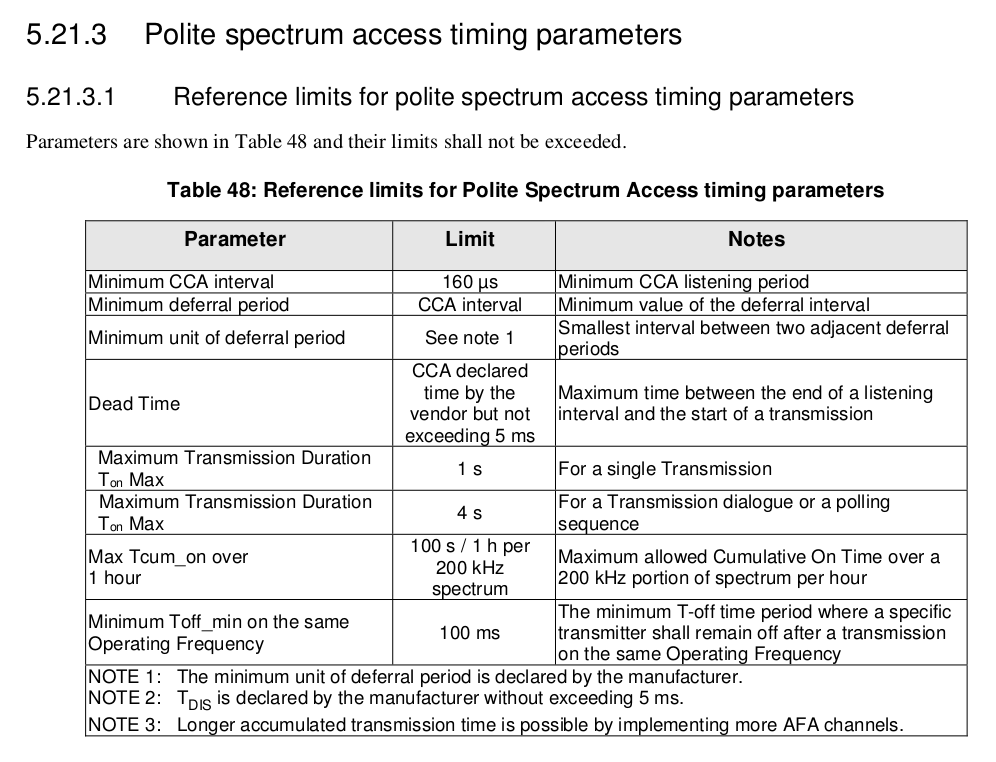Other Parts Discussed in Thread: TIMAC
Hi.
We use the CC1310 with TIMAC in our products.
While passing the CE certification, the laboratory asked us the following parameters from the ETSI EN 300 220-1 standard:
The problem is none of those parameters ares in the doc, wiki, or code.
We would like, for both beacon and non beacon modes, the values of each parameters in the table above when TIMAC is set by default.


